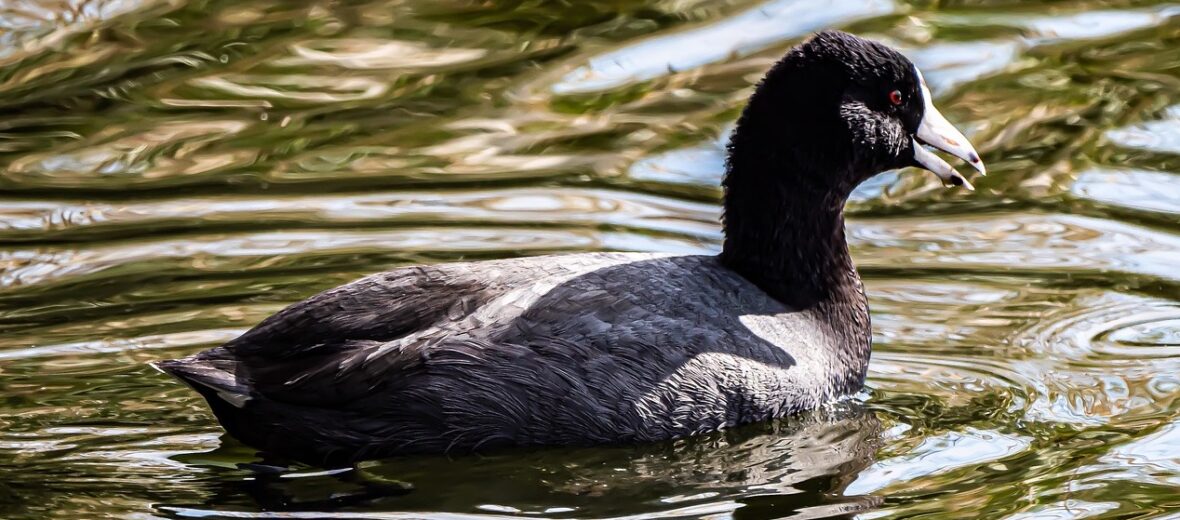
The American coot is a sociable and noisy bird from the rail family. They are adaptable and tough waterbirds that, unlike rails, have no problem swimming out in the open. Males tend to be very aggressive towards each other and fight often for breeding rights and dominance. These critters prefer freshwater wetlands, marshes, swamps, sewage ponds, suburban parks, and the edges of large lakes. Coots have strong legs and big feet with lobed toes that they not only use to assist in swimming and diving, but also for fighting. The American coot is listed as Least Concern by the IUCN.
First the Stats…
Scientific name: Fulica
Weight: Up to 16 ounces
Length: Up to 15 inches
Lifespan: Up to 9 years
Now on to the Facts!
1.) A group of coots, in the water, is called a “raft”. A group of coots on land is called a “flock”.
2.) Being omnivorous (eat both plant and animal matter), these birds eat stems, seeds of pondweeds, sedges, leaves, grasses, algae, tadpoles, fish, insects, worms, crayfish, prawns, snails, and even the eggs of other birds.
3.) Coots often gather in winter flocks of a several thousand strong. They will also mix with other waterfowl.
4.) Hunters sometimes shoot them for sport. The primary locations for hunting these birds are California, Florida, Louisiana, Minnesota, and Wisconsin.
5.) Their main predators are the bald eagle and peregrine falcons.
But wait, there’s more on the Coot!
6.) During mating season the males will act quite flamboyant and carry on with displays that include swimming with their head and neck lowered, wings arched, and tail raised to show off their white patches.
7.) The American Coot builds a floating platform for a nest, made of stems of marsh plants like the cat tail.
Did you know…?
Chicks can swim shortly after birth and can fly in just a couple weeks time.
8.) Females lay up to 12 eggs each season. Both the male and female take part in incubation.
Now a Short American Coot Video!
Also, check out the Critter Science YouTube channel. Videos added frequently!
Want to suggest a critter for me to write about? Let me know here.




Leave a Reply